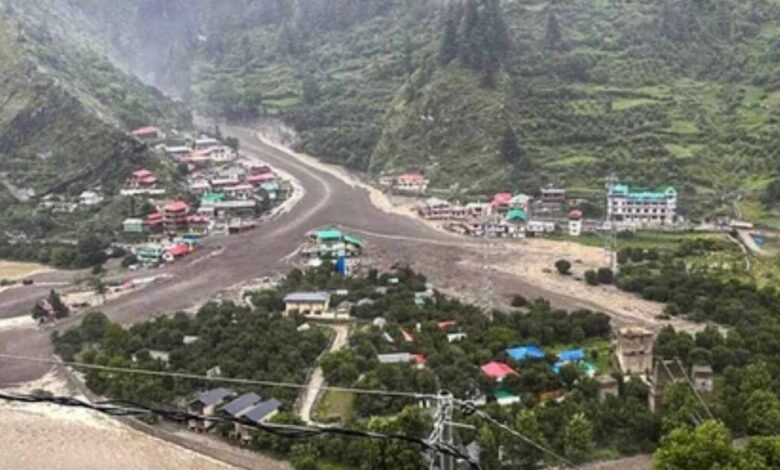Dharali Tragedy and Himalayan Warning: Greed, Negligence and the Way of the Future

The disaster that occurred in Dharali, Uttarkashi has shaken the entire Himalayan region. A sudden severe flood and landslide destroyed everything in this quiet village situated on the banks of Kheer Ganga. Kalp Kedar Temple situated at the confluence of Bhagirathi and Kheer Ganga has now become history. Houses were washed away, fields were destroyed and many lives were lost forever. But after every disaster, only one question arises in the mind, will we ever learn from these disasters?
The Kedarnath disaster of 2013 shook the entire country. It was then felt that caution would be taken in development and construction in the Himalayan areas. It was thought that geological and environmental studies would get priority. But seeing the destruction of the earth today, it seems that we have stopped listening to the warnings of nature in the face of our greed.
Instead of understanding the mountain, we are trying to conquer it. We are building on the sand of the river, whereas this sand and the open flow of the river is the protective shield. When we block its path, the same river snatches its path in the next rain or cloudburst and this causes huge devastation.
Our elders understood the language of the Himalayas even without any degree. They knew which stream filled up during the rainy season, which stream should not have a house built around it, and which slope was better to be left vacant. Today, we have abandoned that folk wisdom and have blindly trusted only machines and iron power in the name of development, and the result is in front of us.
Geologists and environmental experts have been continuously warning for quite some time now. Dr. S.P. Experts like Sati have repeatedly said that the Himalayas are a young and unstable mountain range. Its rocks rest on old landslide belts and fault lines. Cloudbursts, localized heavy rainfall and glacier lake outbursts have now become common occurrences.
In such a situation, construction on the sand of rivers, indiscriminate cutting of mountains and making tunnels is a direct war against nature. And the result of this war is always such disasters.
Now the time has come that we create a sustainable and scientific Standard Operating Procedure (SOP) for Himalayan development. In this SOP, it should be decided how development work will be carried out in the Himalayan areas and what will be its extent. The basis for making it should not be only administrative paper, but also folk knowledge, geological, environmental and ecological studies. Road, bridge, tunnel, hotel or hydro project – every construction should be done only if it fits within the limits of SOP.
Merely making SOP is not enough. It is important to implement it immediately and strictly follow it. Administration, local bodies and construction agencies, all should come under its purview. Also, it is equally important to make local people and tourists aware about disaster, construction risks and environmental regulations. If citizens themselves become conscious, then there will be pressure from the society on careless construction and encroachment.
The tragedy of Dharali once again reminds us that the alarm of the Himalayas is becoming more intense every year. Now there is a need for comprehensive policy changes and awakening of social consciousness. The true tribute to those who lost their lives in the disaster would be that we mold our development according to nature, and not according to our greed and haste. Otherwise the next disaster is only a matter of time.
(Dr. Mukesh Bora, Ph.D. in Development Communication on Himalayan Issues of Uttarakhand)
[नोट- उपरोक्त दिए गए विचार लेखक के व्यक्तिगत विचार हैं. यह ज़रूरी नहीं है कि एबीपी न्यूज़ ग्रुप इससे सहमत हो. इस लेख से जुड़े सभी दावे या आपत्ति के लिए सिर्फ लेखक ही ज़िम्मेदार है.]

